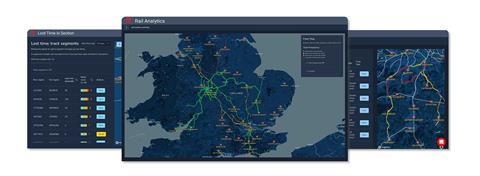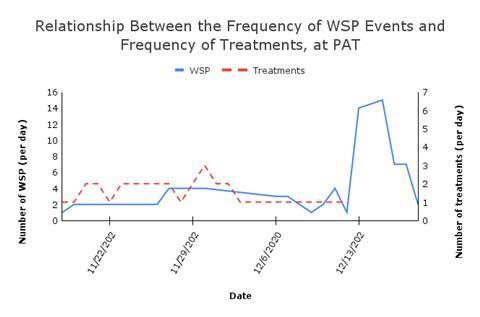Discover how Network Rail and Porterbrook enhance seasonal treatment strategies by creating a dynamic view of track conditions.
Understanding the condition of over 32000km of rail across the UK is no simple feat, particularly when seasonal changes alter them in a matter of hours. Throughout autumn and winter, the impact of leaves, snow and ice creates dangerous environments for trains to travel on and often causes delays. In autumn alone, this generates a £290 million negative impact on rail performance.
To combat this, Network Rail, the owner and infrastructure manager of most of the railway network in Great Britain, has a dedicated fleet of treatment vehicles cleaning their tracks. Still, maintenance strategies have been difficult to optimise as they previously relied only on staff experience, disparate data and retrospective adhesion reports.
Network Rail and Porterbrook are utilising Route Reports Seasonal Intelligence Platform to aggregate track condition data and train performance to optimise and prioritise seasonal treatment strategies to overcome these challenges.
For in-depth information, download the case study here.
Real-time condition monitoring
Improving seasonal maintenance strategies requires transforming the way we receive information - from a static to a dynamic approach.
Traditionally, the effectiveness of a treatment process is only known after adhesion reports have been submitted by rail operators, creating a delayed and reactive maintenance process. Network Rail and Porterbrook are overcoming this challenge by actively monitoring wheel slide protection (WSP) activations from trains through Route Reports SIP, providing a real-time view of track conditions.
Alongside this data, SIP gathers information from Network Rail’s treatment trains, monitoring the quantity of resources used, sections of track treated and the speed of the treatment vehicle.
By comparing this treatment data with WSP data, Network Rail can establish the effectiveness of different treatments on particular track sections, giving them advanced insight into their operations and the power to optimise and prioritise their treatment strategies.
Neal Fleming, Digital Services Programme Manager from Porterbrook said, “Seasonal changes negatively impact train performance and often cause delays or cancellations. Route Reports’ Seasonal Intelligence Platform combats this by providing a real-time view of track conditions across the UK, allowing for the prioritisation of maintenance efforts, which improves travel times and reduces the overall cost of maintenance.”
Route Reports’ Seasonal Intelligence Platform has aided in understanding and resolving seasonal changes throughout the UK’s rail network.
All data is collected through easily installed devices on Network Rail and Porterbrook trains, with insights presented on an accessible browser-based dashboard.

Accessible insights
Alongside track condition and treatment effectiveness, Route Reports’ intuitive dashboard allows Network Rail and Porterbrook to identify:
Lost time in section
Route Reports maps and compares low adhesion areas to an “on-time” model for all track segments allowing operators to identify lost time due to low adhesion.
Missed sites
Previously it took 4 hours to report on track segments that were left untreated, but with SIP, Network Rail can identify missed sights in real-time - missed site reports are now complete in 10 seconds.
Season end timing
Previously, it was challenging to identify when seasonal treatments should end. The date for the end of treatments was typically determined in advance based on assumptions of meteorological conditions rather than actual conditions on the ground. Real-time condition data revolutionises this approach to inform the decision to end treatment. The graph below indicates how WSP activations spiked immediately after seasonal treatments ended - informing Network rail that they should continue.

Future proof analytics
Route Reports SIP is designed to be fleet agnostic, allowing the solution to scale and be deployed nationally with ease.
Analytics provided by the solution remain within the platform indefinitely, giving train operating companies (TOC) the power to reference previous data with the click of a button. This level of insight helps operators better prepare for the future.
Finally, SIP is constantly evolving through the specific needs of TOCs and maintenance companies, allowing it to adapt as new challenges arise.
Discover intelligent rail monitoring
Visit RouteReports.com to learn more about our rail monitoring solutions, or book a demo to see them in action.
Thumbnail image by Martin Sanchez on Unsplash

















